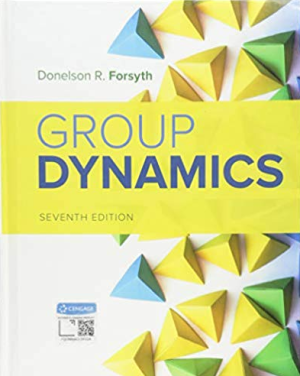Design and Analysis of Experiments 9th Edition by Douglas C. Montgomery, ISBN-13: 978-111911347
[PDF eBook eTextbook]
752 pages
Publisher: Wiley; 9 edition (March 13, 2017)
Language: English
ISBN-10: 1119113474
ISBN-13: 978-1119113478
Design and Analysis of Experiments, 9th Edition continues to help senior and graduate students in engineering, business, and statistics-as well as working practitioners-to design and analyze experiments for improving the quality, efficiency and performance of working systems. This bestselling text maintains its comprehensive coverage by including: new examples, exercises, and problems (including in the areas of biochemistry and biotechnology); new topics and problems in the area of response surface; new topics in nested and split-plot design; and the residual maximum likelihood method is now emphasized throughout the book.
Table of contents:
Preface……Page 3
Contents……Page 8
Strategy of Experimentation……Page 15
Some Typical Applications of Experimental Design……Page 21
Basic Principles……Page 25
Guidelines for Designing Experiments……Page 27
Brief History of Statistical Design……Page 33
Summary – using Statistical Techniques in Experimentation……Page 34
Problems……Page 35
Simple Comparative Experiments……Page 37
Introduction……Page 38
Basic Statistical Concepts……Page 39
Sampling & Sampling Distributions……Page 42
Inferences about the Differences in Means, Randomized Designs……Page 47
Inferences about the Differences in Means, Paired Comparison Designs……Page 64
Inferences about the Variances of Normal Distributions……Page 67
Problems……Page 69
Example……Page 79
The Analysis of Variance……Page 81
Analysis of the Fixed Effects Model……Page 83
Model Adequacy Checking……Page 92
Practical Interpretation of Results……Page 100
Sample Computer Output……Page 113
Determining Sample Size……Page 117
Other Examples of Single-Factor Experiments……Page 119
The Random Effects Model……Page 125
The Regression Approach to the Analysis of Variance……Page 133
Nonparametric Methods in the Analysis of Variance……Page 137
Problems……Page 139
The Randomized Complete Block Design……Page 149
The Latin Square Design……Page 167
The Graeco-Latin Square Design……Page 174
Balanced Incomplete Block Designs……Page 176
Problems……Page 185
Basic Definitionsand Principles……Page 193
The Advantage of Factorials……Page 196
The Two-Factor Factorial Design……Page 197
The General Factorial Design……Page 215
Fitting Response Curves and Surfaces……Page 220
Blocking in a Factorial Design……Page 229
Problems……Page 234
Introduction……Page 244
2^2 Design……Page 245
2^3 Design……Page 254
General 2^k Design……Page 266
Single Replicate of 2^k Design……Page 268
Additional Examples of Unreplicated 2^k Desidns……Page 282
Designs are Optimal Designs……Page 294
Addition of Center Points to 2^k Designs……Page 299
Why Coded Design Variables……Page 304
Problems……Page 306
Introduction……Page 322
Factorial Design……Page 323
Factorial Design in Two Blocks……Page 325
Another Illustration of Why Blocking Is Important……Page 333
Factorial Design in Four Blocks……Page 334
Blocks……Page 336
Partial Confounding……Page 337
Problems……Page 339
Two-Level Fractional Factorial Designs……Page 342
Design……Page 343
Design……Page 358
Fractional Factorial Design……Page 365
Alias Structures in Fractional Factorials and Other Designs……Page 374
Resolution III Designs……Page 376
Resolution IV and V Designs……Page 390
Supersaturated Designs……Page 398
Summary……Page 399
Problems……Page 400
3^k Factorial Design……Page 420
Factorial Design……Page 427
Factorial Design……Page 432
Factorials with Mixed Levels……Page 436
Nonregular Fractional Factorial Designs……Page 439
Constructing Factorial and Fractional Factorial Designs Using an Optimal Design Tool……Page 456
Problems……Page 468
Fitting Regression Models……Page 474
Linear Regression Models……Page 475
Estimation of the Parameters in Linear Regression Models……Page 476
Hypothesis Testing in Multiple Regression……Page 487
ConfidenceIntervals in Multiple Regression……Page 492
Prediction of New Response Observations……Page 493
Regression Model Diagnostics……Page 494
Testing for Lack of Fit……Page 497
Problems……Page 499
Response Surface Methods & Designs……Page 503
Intro to Response Surface Methodology……Page 504
The Method of Steepest Ascent……Page 506
Analysis of a Second-Order Response Surface……Page 511
Experimental Designs for Fitting Response Surfaces……Page 525
Experiments with Computer Models……Page 549
Mixture Experiments……Page 556
Evolutionary Operation……Page 567
Problems……Page 572
Introduction……Page 583
Crossed Array Designs……Page 585
Analysis of the Crossed Array Design……Page 587
Combined Array Designs and the Response Model Approach……Page 590
Choice of Designs……Page 596
Problems……Page 599
Random Effects Models……Page 603
The Two-Factor Factorial with Random Factors……Page 604
The Two-Factor Mixed Model……Page 611
Rules for Expected Mean Squares……Page 616
Approximate F-Tests……Page 619
Additional Topics on Estimation of Variance Components……Page 623
Problems……Page 629
Nested & Split-Plot Designs……Page 632
The Two-Stage Nested Design……Page 633
General m-Stage Nested Design……Page 642
Designs with Both Nested and Factorial Factors……Page 644
The Split-Plot Design……Page 648
Other Variations of the Split-Plot Design……Page 654
Problems……Page 664
Nonnormal Responses & Transformations……Page 671
Unbalanced Data in Factorial Design……Page 680
Analysis of Covariance……Page 684
Repeated Measures……Page 706
Problems……Page 708
Appendix……Page 711
Biblio……Page 738
Index……Page 745
What makes us different?
• Instant Download
• Always Competitive Pricing
• 100% Privacy
• FREE Sample Available
• 24-7 LIVE Customer Support









Reviews
There are no reviews yet.